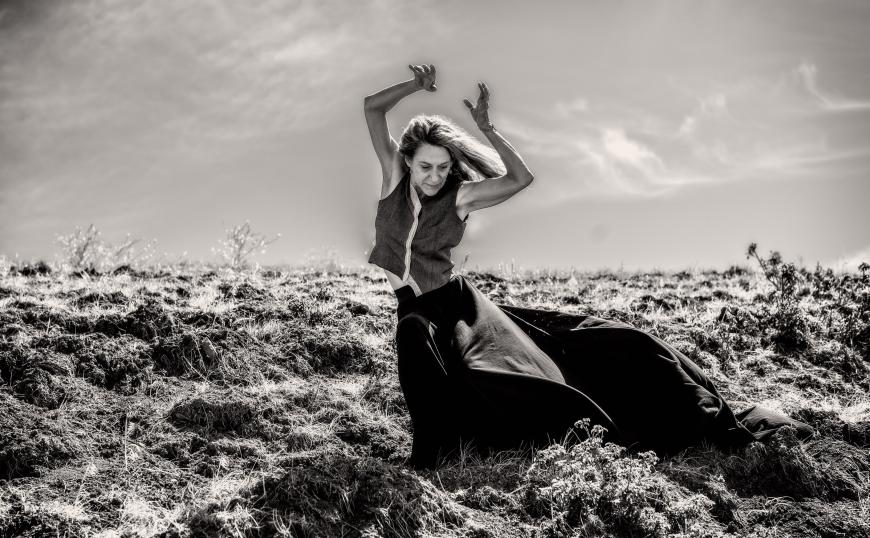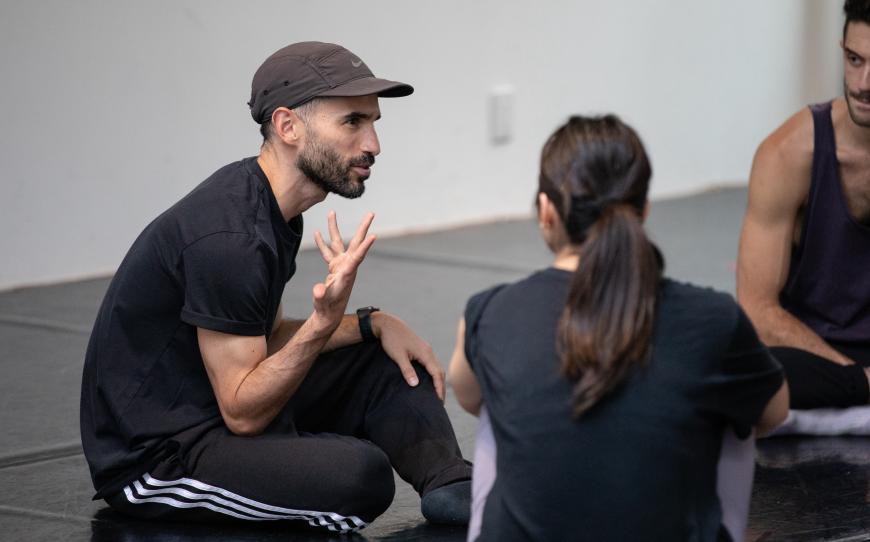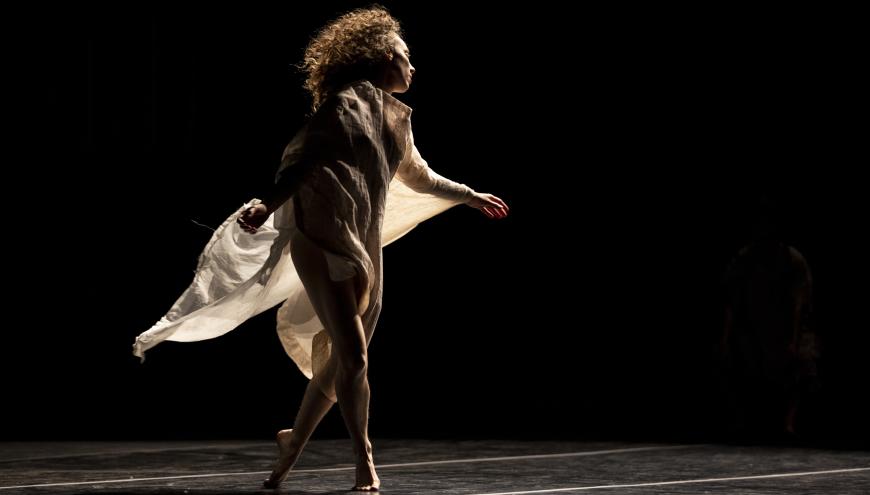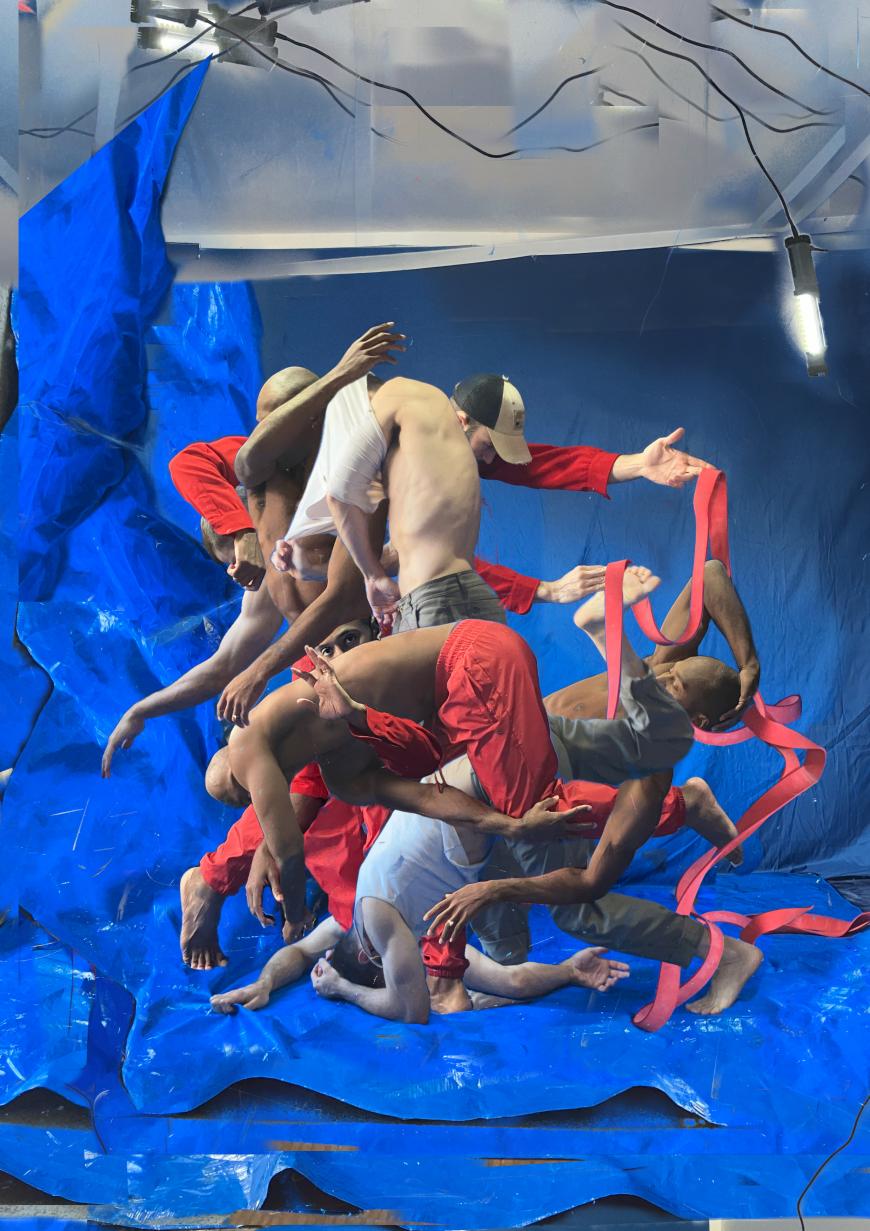
ODC Theater is presenting the 12th iteration of its summer dance festival, State of Play, Aug. 1–4. This year, CounterPulse steps in as a co-producer for the four-day event that showcases the choreographic endeavors of both established artists and emerging talents. And San Francisco Ballet has once again partnered up to provide extra rehearsal space.
Chloë L. Zimberg, ODC Theater creative director, and Maurya Kerr, ODC Theater resident curator, put together the program, which includes three evening-length works, four shorter works, three works in progress, and a three-day movement workshop taught by select festival artists, as well as a panel discussion, post-performance talks, and a community mixer.
Here’s a small sampling of choreographers and performers at the festival, revealing the breadth of the offerings at State of Play.

Bryan Arias’s The Broken Glass was commissioned last season by Dana Genshaft, artistic director of SFDanceworks. Performed at ODC Theater in 2023, the 20-minute piece was an immediate success. Arias says, “It is a personal work. I live in Europe, and [around the time I was working on the piece] I was planning a trip to Puerto Rico, where I was born, but I hadn’t been back in a long time. My trip coincided with my dad’s illness. It was a moment in my life to reconnect with my father, because I’m not so close with him, and at the same time reconnect with my roots. All of these things came together to create this work. I titled it The Broken Glass because my dad loves the music of Jose Feliciano. I grew up listening to my dad play Feliciano on the guitar, and one of his favorite songs is ‘La Copa Rota’ (The broken glass).”
“ODC saw the work, and the team wanted to invite me back with SFDanceworks. We decided to go from a work that’s 20 minutes to a work that’s 35 to 40. … I remember as a dancer — and the dancers here also feel the same — that when you return to something, it’s familiar, of course, but somehow you’ve let it go. You’ve lived a bit more, and you come back to it with an understanding that you can let go and dig in deeper. There are nuances that we’re digging into that are really wonderful and satisfying.”

Another choreographer and performer on the State of Play lineup is Hadar Ahuvia. Her solo work nefesh bridges many disparate areas of interest, combining her work on Eastern European Ashkenazi music and Yiddish dance while reclaiming centuries-old traditions of the Jewish diaspora and feminist mysticism. Ahuvia is also a rabbinical student at Hebrew College and an organizer with Rabbis for Ceasefire.
“I’ll take you back to my previous series of works,” Ahuvia explains. “I was deconstructing Israeli folk dances that I grew up dancing with my mom and my friends, partly in Israel. We moved a lot. Dancing those dances is a way to stay connected to Israel, and as my relationship to Zionism shifted, I started to think about how politics lives inside of my body. I created this whole series of works where I was exploring Israeli folk songs and dances and the way that they practiced a certain ideology and value system and relationship to place but also the ways in which they obscure Palestinian relationship to the land.
“So I’m going deep into this last series of work to think about how I got here. In making those dances, what I ended up doing was practicing this deconstruction, practicing the critique, but in the end, [I ask myself] ‘What kind of Jewish life do I want to move toward? What do I see as a way for Israelis and non-Israelis to move beyond Zionism?’”

David Harvey and Babatunji Johnson will be premiering Chimera, a duet for the two dancer-choreographers. They met dancing with Alonzo King LINES Ballet. Harvey says, “We’ve been best friends for 10 years, and we’re both very busy and live in different places and travel a lot. But whenever we can we get into a studio together, we always have plenty to dig into. It’s been a very rewarding creative partnership in that way for a long time.”
Asked what he and Johnson have in common that makes their partnership work, Harvey answers, “What immediately pops into my head is all of the opposition.
“We’re coming from very different places, even though we shared a training lineage by working with Alonzo. Tunji has a tremendous amount of physical force and power and enthusiasm, whereas I’m generally trying to work with as little force as possible, and enthusiasm comes maybe a little bit later for me, if at all.”
“There’s lots of versions of each of us in the room when we’re working together. I’m always trying to create space for a less powerful version of Tunji, and he’s always trying to create enough space for me to feel more powerful and more enthusiastic. Our differences create a tremendous amount of chemistry.
“[In Chimera] there’s some pretty quiet intimacy and simple explorations of one another and of ourselves and quite a bit of intertwining and overlapping and emerging through and disappearing into one another. We are in physical contact for almost the entire duet.
“We both love partnering — and not just the technical aspects of it, which can be really exciting. But I think we both love the experience of getting to discover something about ourselves in relationship to someone else.”
Find the complete lineup for the State of Play festival on ODC’s website.




